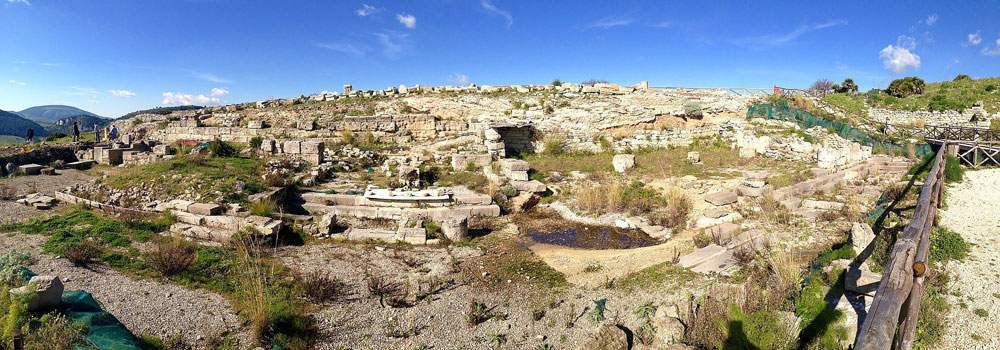Segesta, monumental agora building discovered. Donor's signature on an ancient statue
During excavation activities in the Segesta Archaeological Park, the Scuola Normale Superiore of Pisa has found a monumental building in the area of the portico that closed the ancient agora. Since last May 3, the Scuola Normale Superiore team, with graduate and doctoral students from different universities, has resumed investigations in the agora of Segesta. At the end of the excavation work, directed by Anna Magnetto, Maria Cecilia Parra (professor of Archaeology of Magna Graecia and Ancient Sicily, University of Pisa) and coordinated in the field by Riccardo Olivito (IMT researcher from Lucca), under the supervision of the Director of the Segesta Archaeological Park, Rossella Giglio, relevant results were highlighted, evidence of the importance that munificence held in Greco-Roman society between the 2nd and 1st centuries BC. Also present was Carmine Ampolo, Professor Emeritus of the Normal School, for the study of epigraphic material and historical aspects.
In the new monumental building, the name and works of a personage who financially supported public building works were discovered engraved at the base of anancient statue.
Segesta’s square was built on three sloping terraces from the 2nd century B.C., following urban and monumental models widespread in Mediterranean cities and sanctuaries.
“These are very important results, demonstrating the fundamental role that the munificence of the great families played in the history of ancient Sicily and the prominence that was given to them in the most strategic places,” commented excavation director Anna Magnetto, professor of Greek history at the Scuola Normale Superiore and director of the Saet Laboratory, “just as happens now with the big sponsors of restorations and events.”
“The excavation took place on the southern side of the large square,” added Maria Cecilia Parra, “where a monumental portico closed the agora. It was built by making large cuts in the rock, as the mighty substructure works unearthed along the slope made clear: a complex as impressive as the one on the north side unearthed in past years.”
The upper portico faced the square, in front of a monumental building, with a lower-level facade facing the roadway. A wide doorway opened here, with compartments that served an important role: thanks to the new findings, it was discovered that those entering could read on a base, preserved in its original place, the name and works of a prominent personage in Segesta, one of those who between the 2nd and 1st centuries B.C. supported financially and oversaw monumental public building works: Diodorus, son of Tittelo. “It was the base, well preserved and legible, of one of the statues erected by this personage, already known for having erected the statue of his sister, priestess of Aphrodite Urania, found at the Doric temple in the 17th century,” said Carmine Ampolo. “Another Greek inscription, discovered near the gate, thus enriches the picture of evidence of evergetism, of munificence for the community, of Hellenistic-Roman Segesta: there appears the same name that was inscribed on a statue base (now in Palermo) in the theater of Segesta, perhaps that of its financier. Diodorus has a statue placed here of his father Tittelo, who had been gymnasiarch and had in turn financed the construction of a building for the city’s youth. All this evidence clearly shows the role that great families played in the history of ancient Sicily.”
Image: View of the agora of Segesta. Ph.Credit Davide Mauro
 |
| Segesta, monumental agora building discovered. Donor's signature on an ancient statue |
Warning: the translation into English of the original Italian article was created using automatic tools. We undertake to review all articles, but we do not guarantee the total absence of inaccuracies in the translation due to the program. You can find the original by clicking on the ITA button. If you find any mistake,please contact us.




























